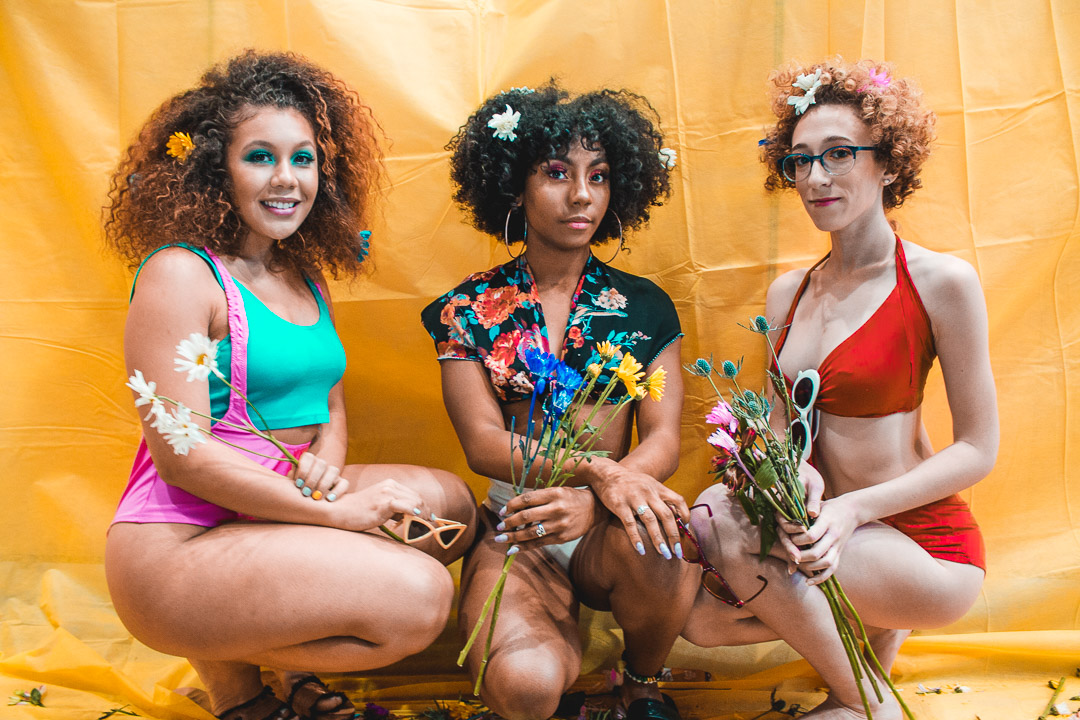Klein College graduate Lexy Williams, KLN ‘18, looked to the hair of 26 models to cap her senior project and spark a discussion about race, identity and culture.
“It’s Just Hair, Right?” — the event Williams described as a visual project about “cultural appropriation, cultural assimilation and cultural appreciation”— brought about 100 people to the Annenberg Atrium on April 30.
“I kind of realized there are a lot of blurred lines within the topic — what is cultural assimilation, appropriation, appreciation — I wanted to talk about the boundaries,” said Williams, who has worked as a cosmetologist. “I wanted to create a show, a platform, a safe space where people can talk about it.”
An example of assimilation can be the black businesswoman who feels forced to use chemical hair relaxers just so she could “fit in” among her straight-haired, mostly white contemporaries, according to Williams. Cultural appropriation can be the New York Post reporting on the trendy, so-called “boxer braids” hairstyle—cornrows, actually—worn by celebrity Kim Kardashian and fighters in the UFC. Or it can be Allure magazine’s afro tutorial for straight-haired women that said nothing about the hairstyle being a recurring symbol of black pride and civil rights.
Williams, who majored in communication studies, said she collaborated with makeup artists and clothing designers to style the models in looks viewed as “ancient African,” and contemporary African American and European American. Her presentation had models with hairstyles that either fit or did not fit their racial identity and/or cultural heritage.
Williams said the idea for the show came from her work styling hair for friends and clients. In one instance, she styled a male Caucasian friend with a full set of dreadlocks and he returned to her three weeks later to confirm what she had warned him: Expect a reaction.
“He got some reactions from black women who loved the hair, some from other races who were looking at him like he was crazy,” she recalled.
Williams said she doesn’t have a problem when a person decides on a certain hairstyle considered outside his or her race, as long as the wearer “gives credit where credit is due,” and sports the style with reverence and respect to the culture that brought the style to the world. That’s cultural appreciation, she said.
For much of her research, Williams used the 2001 book “Hair Story: Untangling the Roots of Black Hair in America,” co-written by Klein College journalism professor Lori Tharps. The book has been called by Tharps’ co-author, Ayana Byrd, “a social history on all things African-American and hair.”
Tharps led the discussion that followed the presentation.
“I literally went home and told my husband I have hope for our future,” she recalled in a recent interview. “I learned so much from watching these young people discuss these very important issues.”
Tharps said she was impressed with Williams’ project.
“Lexy deserves a lot of credit for starting a conversation people need to have. She was able to create a visual example of these abstract issues that are dominating public discussion right now.”
Such work, Tharps said, is “so much better than any paper. It was great to have a three-dimensional interactive public experience as one’s final college work.”
In the fall, Williams, a member of the Lambda Pi Eta communication studies honor society, will be teaching English in Chile. If given the chance, she would like to recreate her hair showcase for a larger audience.
“If I want to do a something like this again, Philly is the place where I want to be.”

